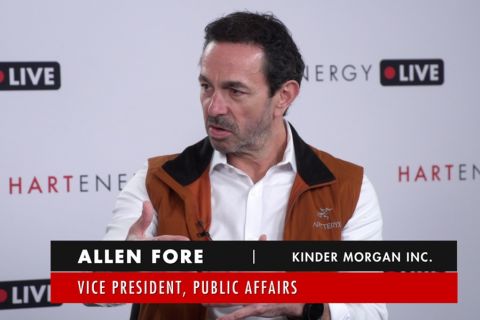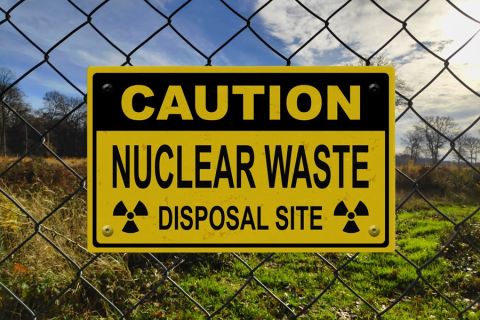A technical challenge West Texas operators face is to drill interbedded conglomerate formations in curve sections with just one bit while achieving high build rates to land target formations as planned. For Cimarex Energy Co., a recent focus was to drill the curve section 50% faster in the Wolfcamp Shale while maintaining high build rates that range from 12 degrees to 14 degrees per 30 m (100 ft) consistently.
Optimizing ROP while maintaining toolface control is a difficult task many directional drillers face while building curve sections with legacy bit offerings. A secondary goal was to apply this technology to other counties with similar challenges.

FIGURE 1. Based on offsets in Reeves County, the Kymera KM624 had an ROP more than double the average rate. (Source: Baker Hughes)
Legacy drillbit options
Past solutions included a choice of roller cone or polycrystalline diamond compact (PDC) drillbits, which required multiple trips and faced directional drilling challenges. Roller cones delivered the manageable toolface control; however, typical limits on ROP were common due to the method of rock removal, which is crushing of the formation. PDCs were another legacy solution that provided the increased ROP by continuously shearing the rock formation. One method to gain ROP in the curve with a PDC bit was to increase the weight applied to the drillbit. When weight is increased on a PDC bit, the torque is increased, which can lead to another unwanted result, stick/slip, if induced. The fluctuating torque makes the toolface extremely difficult to control or maintain and many times leads to increased vibrations.
Vibrations can cause downhole tool issues, borehole quality concerns and unwanted bit performance. These concerns limit the directional driller on the amount of weight that can be applied. Often, the result for directional drillers is lower-than-desired build rates in the conglomerate curve sections to mitigate the toolface control issue with PDC bits. Additional results can lead to not reaching the target as planned, adjustments to well plans such as lengthening the curve section, setting kickoff point sooner with lower build rates than desired, changes to bottomhole assemblies (BHAs), and motor selection alterations and additional trips, depending on which bits are selected. All of this adds to the overall drilling cost.
The solution
Cimarex Energy Co. partnered with Baker Hughes to take advantage of Baker’s fit-for-purpose hybrid drillbit technology and was able to drill the curve more than 50% faster than predefined baseline ROPs without sacrificing the planned high build rates. This performance has been repeated from well pad to well pad and from county to county.
Case studies
The Wolfcamp shale is a well-known source rock throughout the Permian Basin. To reach the Wolfcamp Formation, operators must first drill through the Third Bone Spring Sand Formation. This formation has a rock strength varying from 10,000 psi to 20,000 psi and can be challenging to drill through directionally. Based on offsets of the 8.75-in. curve section within a 16-km (10-mile) radius in Reeves County, the Kymera KM624 reached a landing point of 65 degrees with a ROP of 11.8 m/hr (38.8 ft/hr) compared to the offset average rate of 5.5 m/hr (18 ft/hr). This rate is more than double the average (Figure 1).

FIGURE 2. The 83/4–in. bit’s dull condition was good after the run. (Source: Baker Hughes)
The build rates were consistent, reaching an average of 14 degrees per 30 m and have been achieved consistently using a 2.12 adjustable kickoff motor. Both the directional driller and operator were very pleased with the selected BHA package, which delivered excellent toolface control and bit run (Figure 2).
Overall, the use of hybrid technology in Reeves County shows improvements of 17% for distance drilled, from 159 m to 186 m (522 ft to 609 ft) when compared to offsets that include both PDC and roller cone bits. The ROP also doubled when compared to average offset ROP with the use of the latest design.
In Ward County, with the hybrid technology drilling in the Wolfcamp formation, the rig made it to casing point in only 11 hours and reached a landing point of 70 degrees. The ROP achieved was 16.3 m/hr vs. 5.6 m/hr (53.5 ft/hr vs. 18.4 ft/hr) in the offsets available from Third Bone Spring with average depth ranging from 3,353 m to about 3,658 m (11,000 ft to about 12,000 ft), shown in Figure 3.
With heightened activity in the oil-producing Wolfcamp Shale and Bone Spring sands, operators are looking for innovation to optimize their drilling performance in all sections of the well. Drilling the curve faster without sacrificing high build rates and alterations to well plans are new goals that seek innovative technology.
“With the Kymera solution, we’ve had consistent one-run curves with good penetration rates,” said Spencer Bryant, a drilling and completion engineer for Cimarex. “It’s rare to have a two-bit curve with the Kymera hybrid technology.”
The results also have shown that many of the dynamic dysfunctions typical to legacy bits, such as stick/slip, re-crushing cut rock or back-whirl, can be minimized with new hybrid technology, which exploits the best attributes of each legacy bit type and bridges the gap between them.
The hybrid technology can efficiently drill shale and other formations with problematic malleable characteristics. The synergistic combination of the diamond scraping and roller cone crushing allows the bit to last while drilling conglomerates and interbedded sections. Specific results from this case study prove consistent and repeated build rates as high as 14 degrees per 30 m. The findings also prove that drilling in the Wolfcamp Shale doubles the ROP baseline, defining new goals that will foster the next evolution of hybrid technology.

FIGURE 3. ROP with the hybrid bit is more than double that of the offsets. Best practices are now shared among these counties in West Texas to improve drilling optimization. (Source: Baker Hughes)
Recommended Reading
Yellen Expects Further Sanctions on Iran, Oil Exports Possible Target
2024-04-16 - U.S. Treasury Secretary Janet Yellen intends to hit Iran with new sanctions in coming days due to its unprecedented attack on Israel.
The Jones Act: An Old Law on a Voyage to Nowhere
2024-04-12 - Keeping up with the Jones Act is a burden for the energy industry, but efforts to repeal the 104-year-old law may be dead in the water.
Kinder Morgan Exec: Building Pipelines ‘Challenging, but Manageable’
2024-04-05 - Allen Fore, vice president of public affairs for Kinder Morgan, said building anything, from a new road to an ice cream shop, can be tough but dealing with stakeholders up front can move projects along.
FERC Again Approves TC Energy Pipeline Expansion in Northwest US
2024-04-19 - The Federal Energy Regulatory Commission shot down opposition by environmental groups and states to stay TC Energy’s $75 million project.
BWX Technologies Awarded $45B Contract to Manage Radioactive Cleanup
2024-03-05 - The U.S. Department of Energy’s Office of Environmental Management awarded nuclear technologies company BWX Technologies Inc. a contract worth up to $45 billion for environmental management at the Hanford Site.




